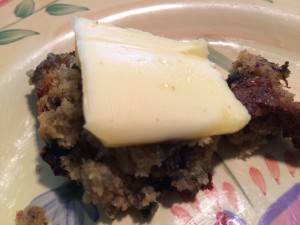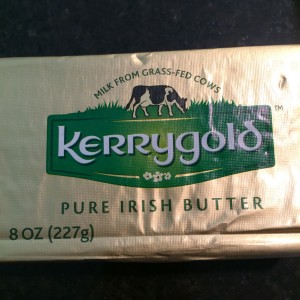 Butter, the long-demonized fat, has made a resurgence. With the recent recognition that trans fats are unhealthy, educated consumers are using more of this traditional fat. Butter, particularly pastured, organic butter, is high in many essential nutrients. Contrary to popular belief, the saturated fats in butter do not contribute to heart disease. Butter offers protective powers against several illnesses. Sweden, in fact, recently changed their country’s health guidelines to include more healthy saturated fats and less processed carbohydrates.
Butter, the long-demonized fat, has made a resurgence. With the recent recognition that trans fats are unhealthy, educated consumers are using more of this traditional fat. Butter, particularly pastured, organic butter, is high in many essential nutrients. Contrary to popular belief, the saturated fats in butter do not contribute to heart disease. Butter offers protective powers against several illnesses. Sweden, in fact, recently changed their country’s health guidelines to include more healthy saturated fats and less processed carbohydrates.
Why our bodies need butter
Butter is an excellent source of fat soluble vitamins A, D and K2, necessary for many health functions. It also contains the trace minerals manganese, chromium, zinc, copper, iodine and selenium. Butter from cows eating green grass contains high amounts of CLA, or conjugated linoleic acid, which gives protection against cancer and helps the body build muscle instead of fat. Butter contains healthy cholesterol needed for intestinal, brain and nervous system health. Glycosphingolipids, a special type of fatty acid found in butter, protects against gastrointestinal infections. A hormone-like substance, the Wulzen factor, prevents arthritis and joint stiffness. This substance is destroyed by pasteurization and can be found in raw butter and cream. The saturated fats and nutrients in butter protect against asthma and infertility as well.
Pastured butter has an excellent ratio of omega-3 to omega-6 fats. Omega-3 fats are anti-inflammatory and important to heart and mental health.
A recent study at the University of Cambridge, analyzing data from 72 different studies and 18 different countries, concluded that saturated fats are not a risk factor for heart disease. In short, pastured butter is protective against heart disease, cancer, arthritis, obesity, infertility, asthma and other diseases.
Consumption of butter trends
Butter consumption was commonplace in the early 1900s. At that time, heart disease was  not widespread and heart failure generally occurred in association with an acute infection. Infectious agents and accidents were the most common cause of death at that time, compared to heart disease and cancer today.
not widespread and heart failure generally occurred in association with an acute infection. Infectious agents and accidents were the most common cause of death at that time, compared to heart disease and cancer today.
The development of processed oils such as Crisco, canola and corn oil, beginning in 1911, including huge advertising campaigns, led to a decrease in butter consumption. With the demonization of butter in the 1950s due to misinformation and faulty studies, butter sales decreased further.
Fortunately, butter’s health benefits and processed fat’s health dangers are becoming better known. Informed consumers are again enjoying butter. Since 2000, butter sales have increased by 65%. According to the American Butter Institute, per capita butter consumption is at a 40-year high.
Ways to increase butter intake in the diet:
1. Use butter for baking
2. Add butter to cooked vegetables
3. Melt butter and pour on home-made organic popcorn, popped on the stove top with coconut oil or butter
4. Add butter to coffee
5. Add butter to hot tea
6. Mix butter in smoothies
7. Spoon butter on crackers
8. Slather butter on slices of bread or toast (the more butter, the better)
9. Season fish with butter and spices
10. Cook eggs in butter and add extra butter on top of cooked egg
11. Melt butter on pasta
12. Add butter to cooked rice
13. Use butter in soup recipes
Sources for pastured butter
For sources of raw, pastured butter, check the Weston A. Price Foundation’s Shopping Guide or visit RealMilk.com. Second-best is pasteurized butter from grass-fed cows which can be found at grocery and health food stores. Popular brands include Organic Valley, Kerrygold and Kalona. For more information on butter, visit the sources below.
Sources for this article include:
http://www.naturalnews.com
http://www.naturalnews.com
http://www.naturalnews.com
http://www.naturalnews.com
http://www.westonaprice.org
http://nextshark.com
http://science.naturalnews.com
Written by Michelle Goldstein, Holistic Health to Go
Why butter is better and ways to eat more first published in Natural News on June 11, 2014.
